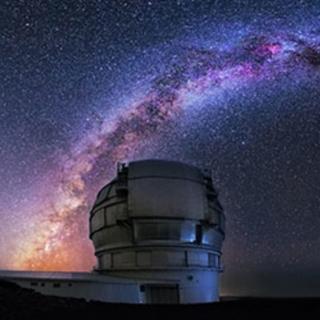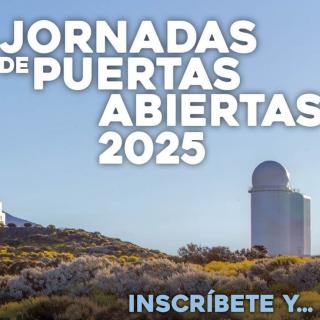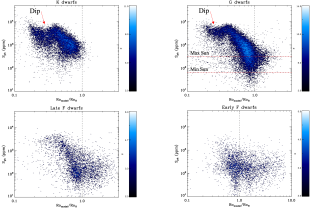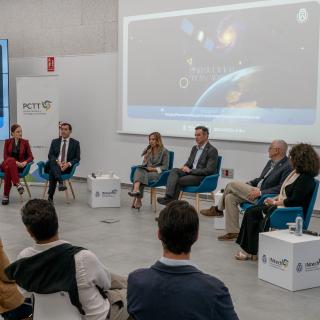In the University of La Laguna today the conference of the International Astronomical Union about the diffuse light in the sky, organized by the Instituto de Astrofísica de Canarias was inaugurated. This meeting brings together over a hundred astronomers in a variety of fields from over 20 countries.
This morning, in the General Lecture Theatres of the Guajara Campus of the University of La Laguna saw the inauguration of the conference of the International Astronomical Union (IAU) “The Realm of the Low Surface Brightness Universe)” organized by the Instituto de Astrofísica de Canarias (IAC) an event which is being celebrated in the context of the centenary of the IAU, the major world astronomical institution.
After an introductory speech by the astrophysicist Johan Knapen, one of the organizers of the conference, Casiana Muñoz Tuñón, the Deputy Director of the IAC, bade those attending welcome in the name of the IAC, emphasizing not only the celebration of the conference in the University of La Laguna (ULL), but also the importance of the Teide and Roque de los Muchachos Observatories, protected against light pollution by the Law of the Sky. This is one of the reasons, she added, why this conference is being held in the Canaries because “we are working to keep our skies as dark as possible”. She was convinced that during the week there would be deep discussions a, bout analysing the universe, and that the participants would return home with new ideas. Ernesto Pereda de Pablo, the Vice-Rector for Research, Transference, and the Santa Cruz and Southern Campuses of the University of La Laguna noted the close relations between the IAC and the ULL and that it was an honour for the University to entertain over a hundred scientists from such varied countries, to whom he wished a magnificent stay in the Islands.
As explained by the astronomer Sakurako Okamoto, from the National Astronomical Observatory of Japan and a member of the scientific organizing committee, it has been a long time since a meeting of this kind has been organized, over ten years, and that the meeting gives the opportunity for a get together of groups of astronomers who study a range of very different questions, from the Solar System and its zodiacal light, to the properties of the universe on a large scale, including its galaxy-bearing filaments. This is a very special conference, as are those of the IAU, because they look for the maximum participation by researchers from all over the world, including developing countries in South America, Asia and Oceania. The idea is to study the phenomena in the universe which emit very little light, so little that they are up to 10,000 times fainter than the light emitted by the darkest night sky as seen from the Observatories. This is information particularly difficult to obtain, which is why the conference will discuss many new techniques and developments from the past ten years.
A new unexplored frontier
After the inauguration speeches the first talk was by David Valls-Gabaud, of the Paris Observatory (France) and one of the conference organizers. He gave a general look about the low brightness sky and about the difficulty of organizing a multi-disciplinary conference such as this one, in which a number of very different communities have come together: groups working on interstellar dust, on stars, on galaxies, and in cosmology.
“In astronomy” he explained “we are not used to treating these subjects because for centuries we have concentrated on point sources, such as stars, or we have wanted to detect very distant galaxies. And for this we have developed bigger and bigger telescopes. But this has biased us, “he warned “against objects which are extended on the sky. There are galaxies which are satellites of the Milky Way which are five times bigger on the sky than the Moon, but are very difficult to detect. If these galaxies were further away it would be impossible to detect them. For that reason there is a space in the observable parameters which is totally unobserved and which is waiting to be explored. Curiously this new perspective allows us to explore phenomena from the zodiacal light, which is due to sunlight scattered by the interplanetary dust grains within the solar system, to the radiation from the cosmic background, in the visible”
Valls-Gabaud added “This discussion opens a new window on the universe which has only recently opened. Many of the most important discoveries have been made in the last five years with instruments which are essentially those of amateurs, because professional telescopes are not well adapted to this work. For this reason the amateurs have played a basic role”
Things still to discover
The first sessions were started by presentations by Mike Disney, of the University of Cardiff (Wales), and by Eva Grebel, of the University of Heidelberg (Germany). Disney, one of the pioneers in the discovery of galaxy with low surface brightness, began by recalling the previous IAU Symposia about this topic. Then he reviewed his own prediction that the universe should be full of very faint galaxies, very difficult to see, using the analogy of an iceberg.
He told us that when the image of the Hubble Deep Field was published he, and everyone else were surprised because the many faint small galaxies which had been predicted could not be seen. And this veteran astrophysicist still believes that there are many galaxies, some of them large, which will eventually be discovered by detecting their atomic hydrogen. He said that although there had been many recent discoveries of dwarf galaxies, there should be a population of large faint galaxies still to detect.
Eva Grebel, an astronomer who is an expert in studying stellar populations and galaxy formation gave a global view of recent observational results about low brightness galaxies. She described how in recent years there have been many measurements of small galaxies in clusters, such as in the Local Group of galaxies. She presented criteria to be used to differentiate between the smallest galaxies and the largest star clusters because these two types of objects could be confused. “If you observe an object which has say 105 or 106 solar masses is it a galaxy or is it a star cluster?” she asked, and presented a set of relationships between the masses and the densities of recently detected dwarf galaxies.
More information:
IAU Symposium 355: The Realm of the Low Surface Brightness Universe
International Astronomical Union
Other press releases: A week to go deeper into some of the more “ghostly” structures in the Universe





